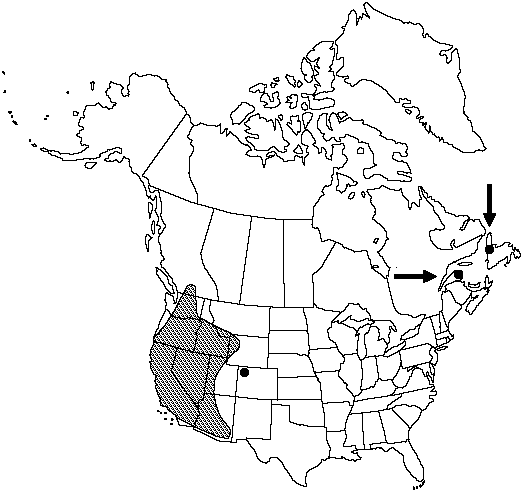Polystichum scopulinum
Fern Bull. 8: 29. 1900.
Stems ascending. Leaves erect, 1–3(–5) dm; bulblets absent. Petiole 1/5–1/3 length of leaf, densely scaly but scales falling off distally; scales light brown, abruptly diminishing in size distally. Blade narrowly lanceolate, 1-pinnate-pinnatifid, base narrowed. Pinnae oblong-lanceolate, overlapping, folded inward and twisted horizontally, 1–3 cm; base oblique; margins serrulate with teeth curved inward; apex obtuse to cuspidate with subapical teeth smaller than apical tooth; microscales narrowly lanceolate, with stout projections, sparse, on abaxial surface only. Indusia entire-ciliate. Spores brown. 2n = 164.
Habitat: Rock crevices and at base of boulders, serpentine to acidic substrates, usually exposed to full sun
Elevation: 0–3500 m
Distribution

B.C., Nfld. and Labr. (Nfld.), Que., Ariz., Calif., Colo., Idaho, Mont., Nev., Oreg., Utah, Wash., Wyo.
Discussion
Polystichum scopulinum is widely distributed in the United States west of the 110th meridian, where it occurs in sporadic, usually small populations. The species is abundant only on montane serpentine outcrops. The populations in Newfoundland and Quebec are dramatically disjunct.
Polystichum scopulinum is an allopolyploid, believed on morphologic grounds to be derived from P. imbricans × lemmonii (D. H. Wagner 1979). Based on putative hybridization between P. scopulinum and P. munitum (P. S. Soltis et al. 1989; W. H. Wagner Jr. 1973), however, P. munitum may also be involved. This hybrid is discussed under P. californicum.
Selected References
None.